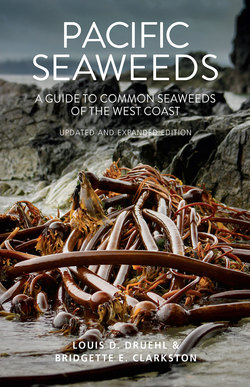Читать книгу Pacific Seaweeds - Louis Druehl - Страница 59
На сайте Литреса книга снята с продажи.
ОглавлениеGreen Seaweeds | 59
Identifying Pacific Seaweeds
Description
The typical feather-like branched filament lacks normal cross-walls and is essentially unicellular. Thus, a typical plant represents one cell up to 15 cm (6 in) long and is branched. These giant cells could “bleed” to death if they broke. Bryopsis overcomes this problem by taking protein bodies from throughout the cell and moving them quickly to the point of break in order to seal the rupture. Scientists have exploited these giant cells by conducting unique hybridization experiments. The pro-cedure is to squeeze the protoplasm from each of two differ-ent morphological forms and mix them together. The resulting plant (a hybrid) contains nuclei representing the different morphologies in the same cell. The form taken by this engineered plant will reveal which morphology is gen-etically dominant, or if neither is dominant, which would result in an intermediate morphology.
Habitat & Distribution
Plants are found on rocks, shells and wood in the lower intertidal region from BC to Mexico.
Bryopsis sp.
Bryopsis corticulans and detail of a large cell (left).
